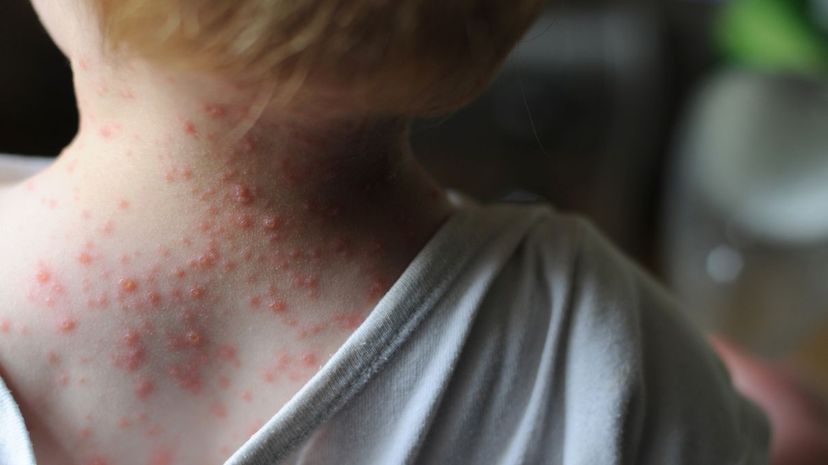
About This Quiz
Most people in the world suffer from some type of skin condition, whether they know it or not. Things like rosacea, psoriasis, eczema, and keratosis pilaris are diseases that people live with every day. Many of us will never notice these conditions, and sometimes we don't even pay attention when we have them ourselves, ignoring them as just an itch or a simple rash that might go away on its own. Then there are many more noticeable conditions that can be extremely painful and even deadly, like basal-cell carcinomas and necrotizing fasciitis. But considering that your skin is the largest organ you have, and it's the one that faces the world day in and day out, it's no wonder it ends up taking some abuse now and then.
Any time you have a serious skin issue crop up, you definitely want to see a dermatologist and find out the best way to deal with the situation. But for now, if you're just the kind of person with an eye for rashes, moles, blisters and more, then maybe you can identify all the skin conditions we've brought together for this quiz based only on a single image. Piece of cake, right? Take the quiz and see!
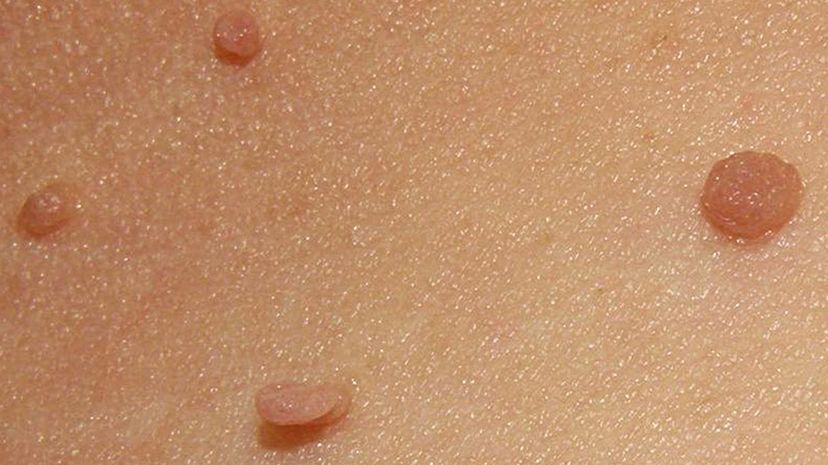
Skin tags are not typically cause for alarm and usually aren't even harmful, though they can catch on clothing and become irritated. Doctors can cut or freeze them off if they're annoying to you.
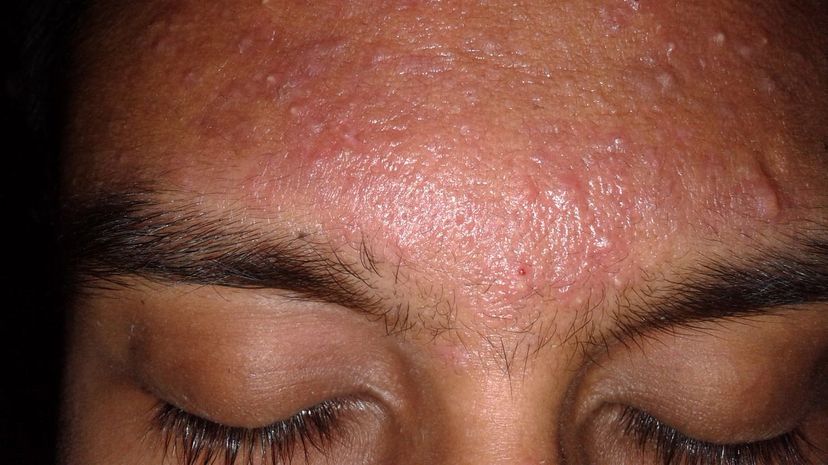
Acne covers a wide range of bothersome skin conditions that are characterized by inflamed or blocked sebaceous glands. The market for treating acne is expected to be worth over $5 billion by 2025.

Measles is one of the diseases that nearly all children are vaccinated against, along with rubella and whooping cough, at an early age. About 140,000 people worldwide died from the measles in 2018.
Advertisement
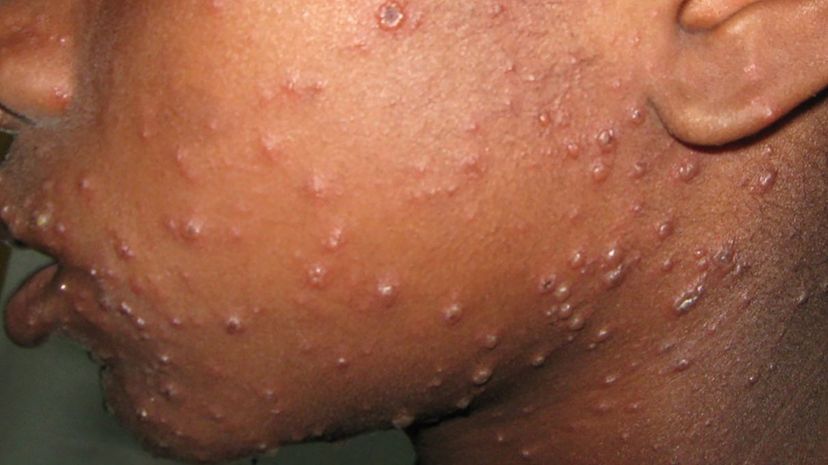
It's not uncommon for some parents to hold pox parties for young children when one of them becomes infected with chickenpox so that they can all get the disease and get it out of the way sooner rather than later.
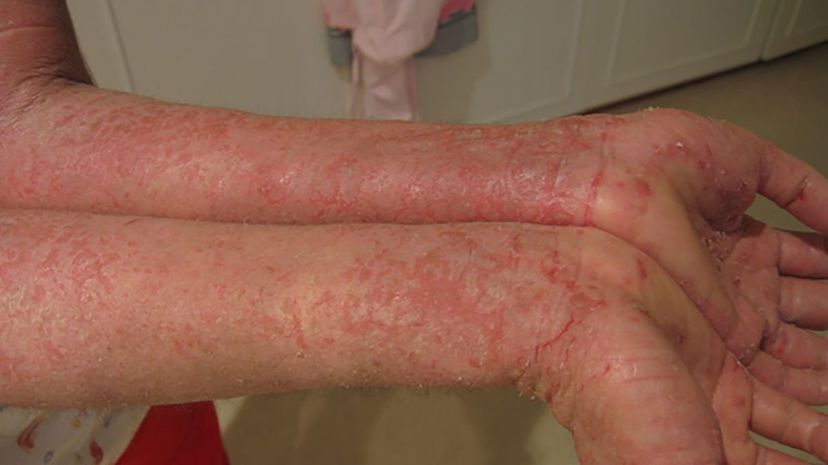
There are several types of eczema but they all cause the sort of symptoms including dry, inflamed skin. Statistics suggest upwards of 30 million Americans suffer from some form of eczema, which is about 1 in 10 people.
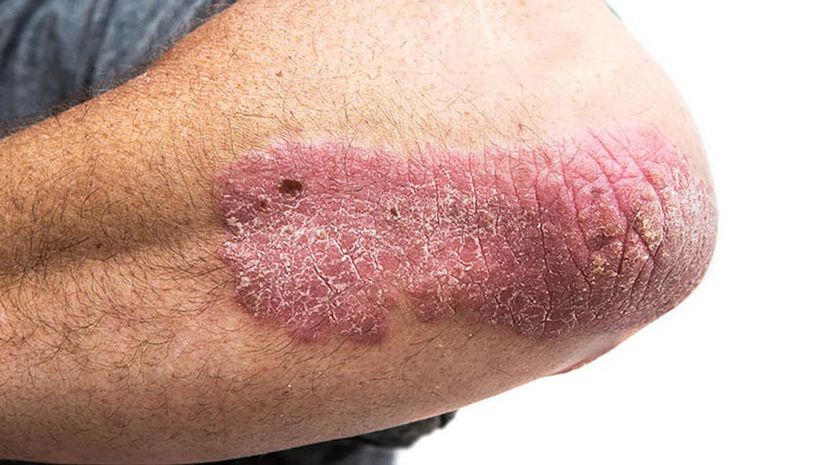
Psoriasis can show up on any part of your body, even your eyelids. It happens because your body is overproducing skin cells at an accelerated rate, taking days rather than weeks to produce new ones, which creates a build-up.
Advertisement
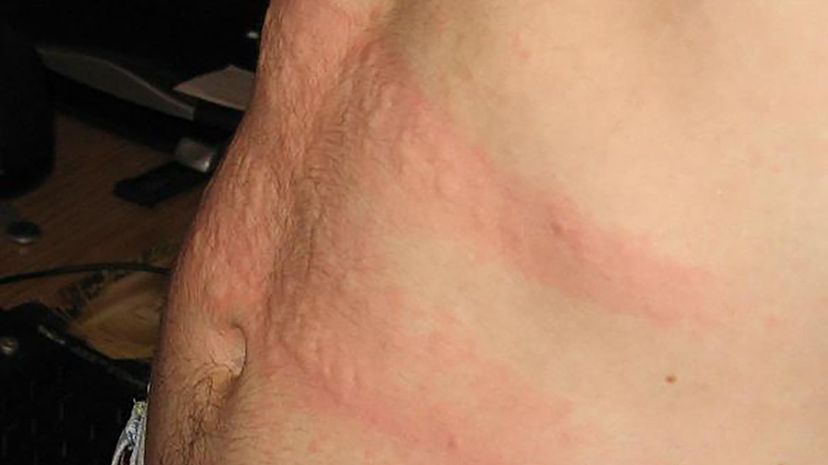
Hives usually present as itchy, red welts or bumps on the skin. They are usually short-lived, lasting only several hours and may be brought on by several things, from allergies to temperature shifts to sunlight.
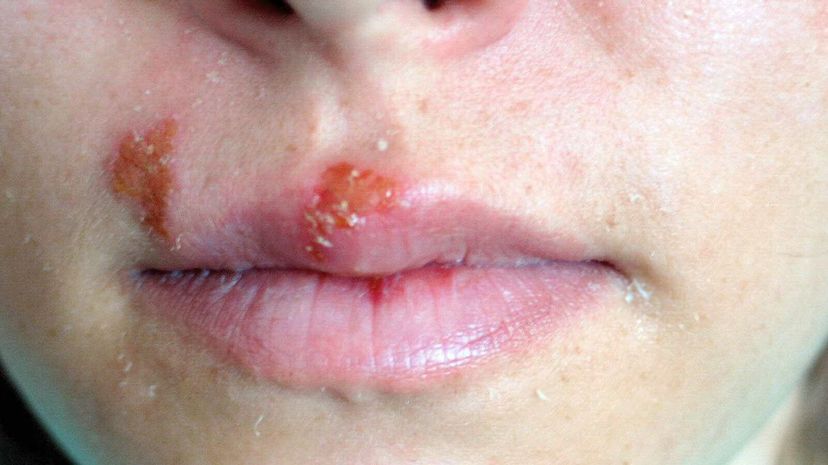
Cold sores are caused by the herpes simplex 1 virus, as opposed to the sexually transmitted kind which is HSV-2. It's estimated up to 2/3 of people are infected with the condition, though many show no symptoms.

Friction and pressure cause your skin to develop thickened layers, the result of which is a corn or calluses. They tend to happen most often on your feet since they take most of the pressure of physical activity that your body goes through. They're usually harmless and can be sloughed off quickly and easily.
Advertisement

Warts look a bit like blisters but are hard and not fluid-filled. They're notoriously hard to get rid of. One of the most common methods of treating them is cryotherapy which involves freezing them until they fall off.
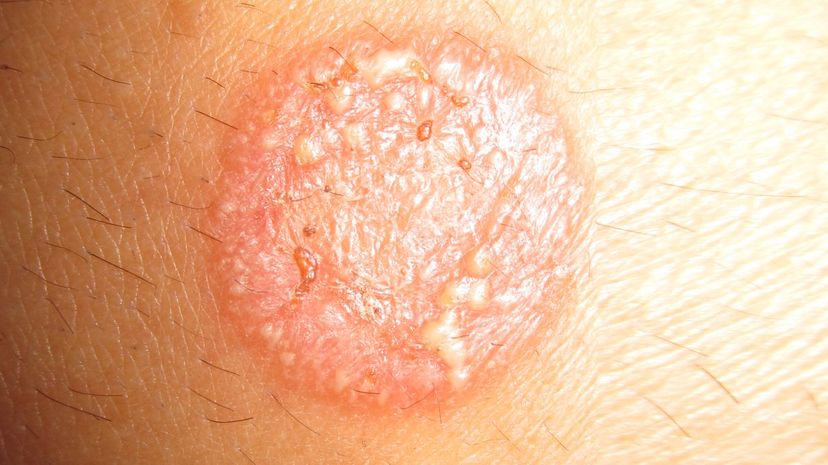
Ringworm causes a rash but is not the result of worms or parasites in your skin, even though the name is somewhat deceptive. It's actually a fungal infection. The name is more than likely a result of the fact the rash looks like you have something curled up under your skin, which is weird, but not a worm.
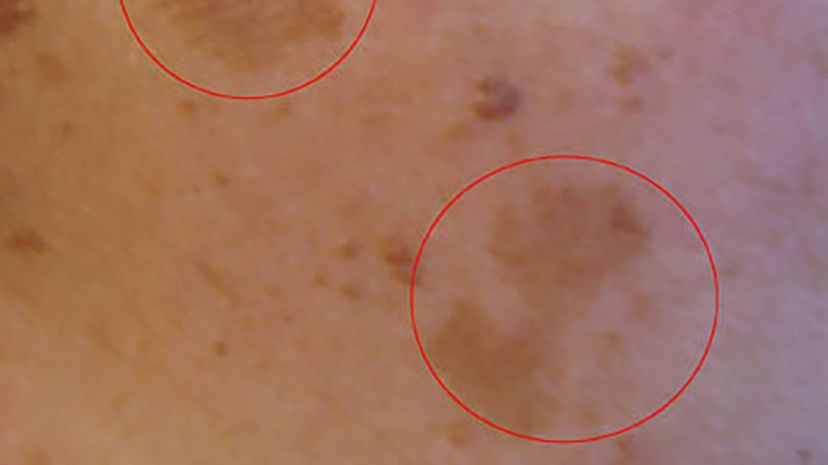
Melasma is most often caused by exposure to sunlight and sometimes because of hormone changes. Effective sunscreen use can help prevent it from happening but once it does, it may either fade on its own or last for years.
Advertisement
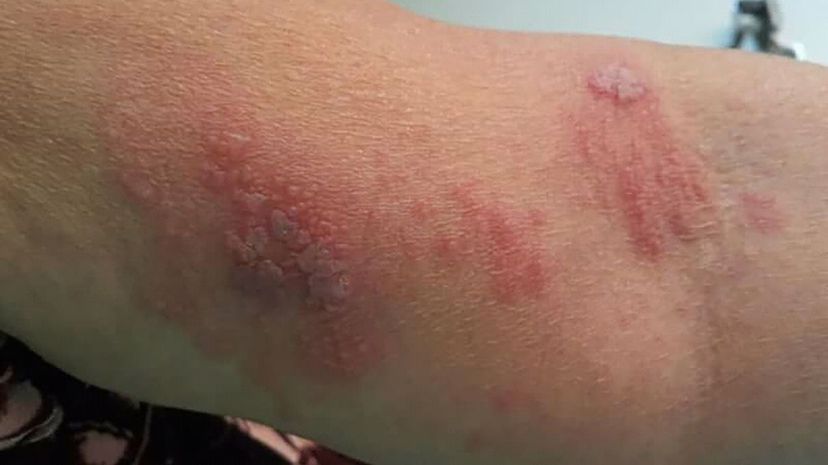
Shingles is caused by the varicella-zoster virus, just like chickenpox. If you've had chickenpox as a child, the virus will often remain dormant in nerve tissue, but if it comes back when you're an adult, it will typically be much more painful than chickenpox.

The cause of Sweet's syndrome is not entirely well known, and in many cases, there isn't a definitive cause. Other times it can be secondary to a larger issue, like an infection or a reaction to certain medications.
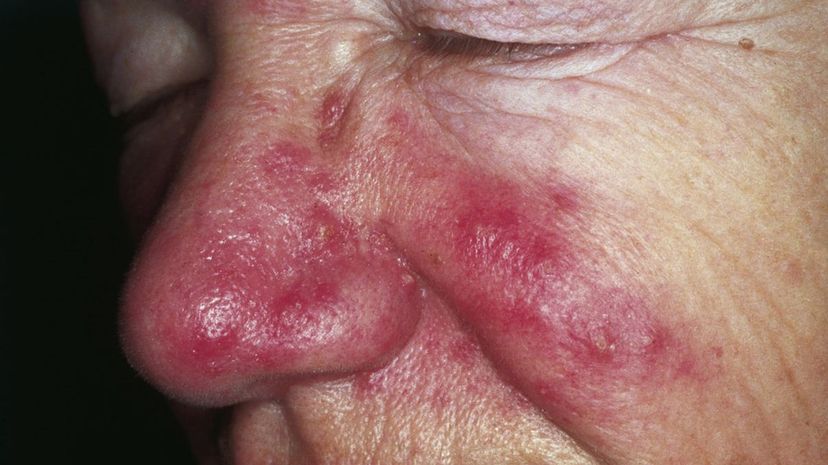
Rosacea usually affects a person's face and causes large reddish patches of skin that may also break out in pimples and swelling. The precise cause is a mystery, but many things can exacerbate the situation once it arises - from sunlight to spicy food to menopause.
Advertisement
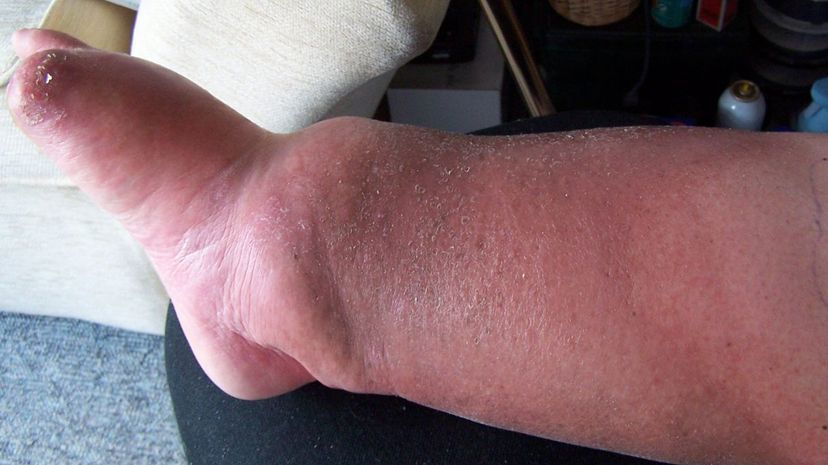
Cellulitis is caused by a bacterial infection - often a staph infection - that starts in a crack or cut in the skin and infects the dermis just below your skin. Antibiotics are needed to clear it up, and it can be quite painful and dangerous if it's not treated.

Vitiligo is an autoimmune condition that may have a hereditary factor, but its cause is not fully understood. It's much more noticeable in people who have a darker skin tone as it strips the pigment - often in blotchy patterns - leaving it nearly white.
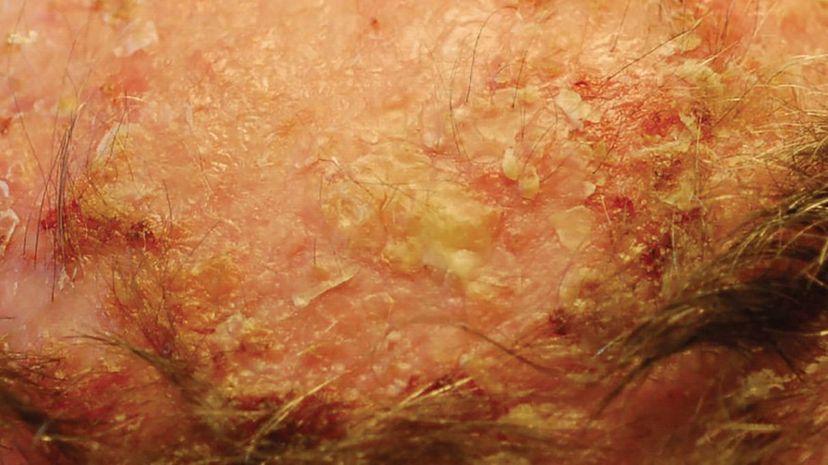
Actinic keratosis looks like scaly, crusty patches of flesh resulting from extensive UV light exposure. Though not cancerous themselves, they're considered pre-cancerous, so if they're not treated, they could lead to skin cancer.
Advertisement
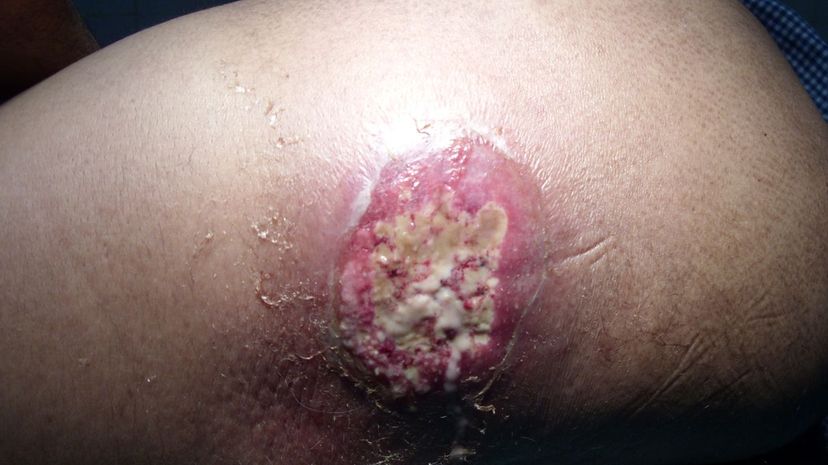
A carbuncle is not a term you hear that often anymore, but it refers to boils caused by a bacterial infection. It's also infectious and can spread to other people or other parts of the body, so it should be dealt with as soon as possible.
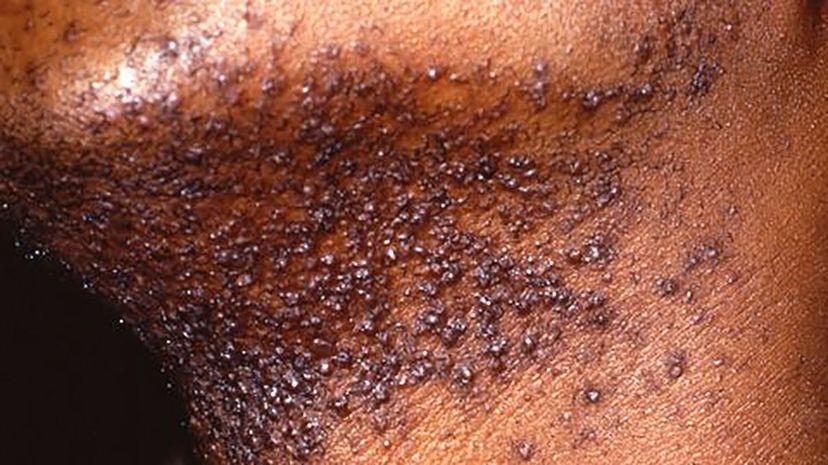
Razor bumps are caused by the hair curling back into the skin after shaving, prompting inflammation and sometimes infected pustules. Not shaving at all is the best prevention, but if you need to shave, using a sharp razor prepared with hot water to open the pores and applying shaving cream to the skin will prevent razor bumps.
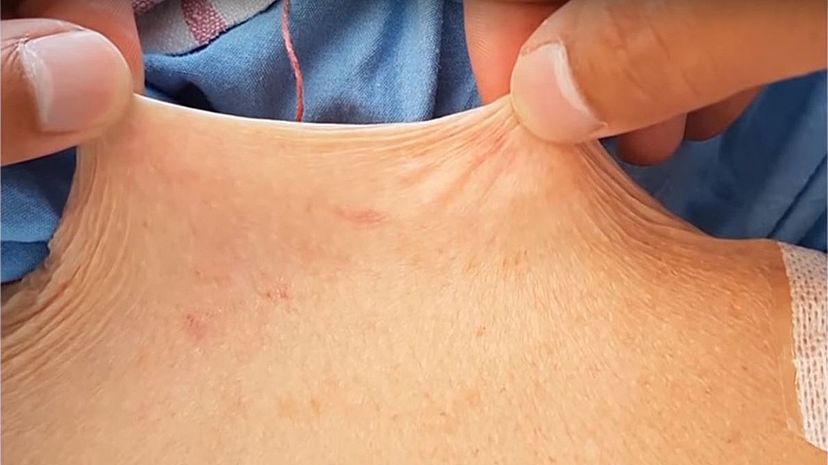
Elastoderma is a relatively rare condition and usually only affects one part of the body, such as the neck. The skin will have an increased laxity, which means it can sag or wrinkle and be easily pulled away from the body. Think Mr. Fantastic from the Fantastic Four.
Advertisement
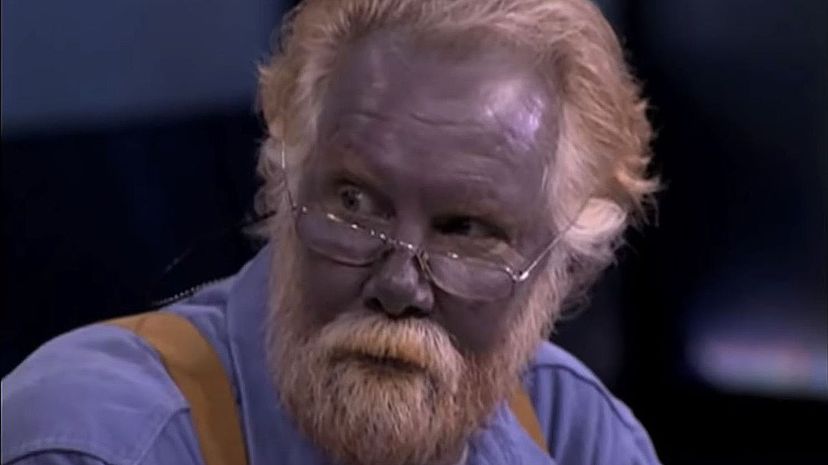
Though very rare, argyria is a fairly well-known condition because of its extremely bizarre symptoms. Excessive exposure to silver and silver dust causes victims skin to turn a stark grayish-purple. Once exposure has stopped, the color will remain.
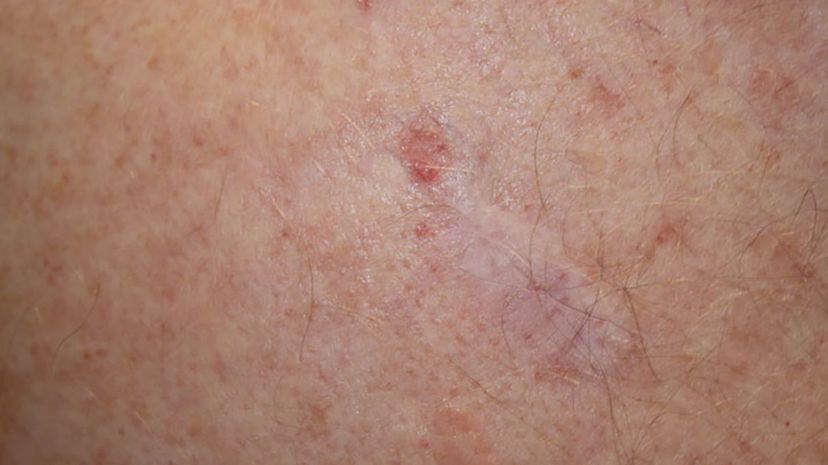
The rates of basal cell carcinoma are remarkably high. About one-third of all cancer around the world is basal cell carcinoma, and anywhere from one-quarter to one-third of all Americans will be affected by this condition at some point in their lives.

As the name suggests, you need to have contact with something for contact dermatitis to affect you. One of the most common examples of this in action is exposure to poison ivy, which will make you extremely itchy where it has touched your skin.
Advertisement

The pigment in your flesh comes from melanocytes, and when those cells develop cancer, it's called melanoma. Although this is almost always a skin condition, it can form in your eyes and mouth and even in your intestines.
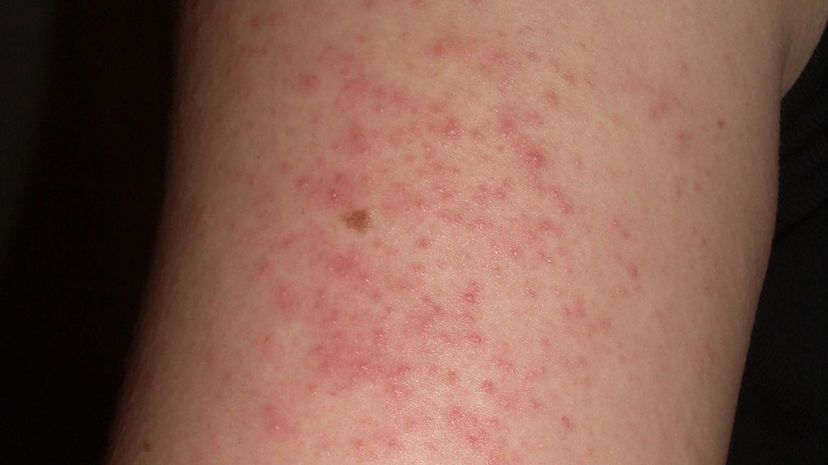
Keratosis pilaris is incredibly common and harmless. It looks much like goosebumps - raised bumps around hair follicles - and typically feels a bit rough to the touch. The biggest issue is that it looks unattractive.
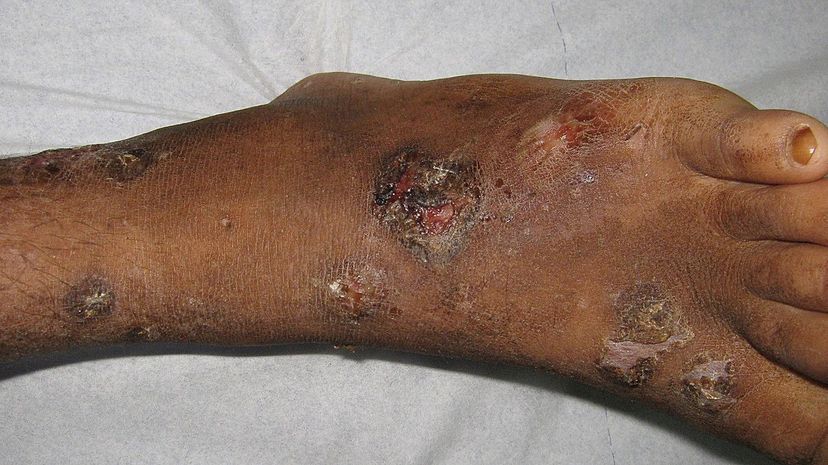
Impetigo often forms around the mouth and nose and may be mistaken for cold sores. Caused by a bacterial infection and usually occurring in younger people, the sores will ooze a yellowish liquid that dries into a crust over the wounds. It's not particularly pleasant.
Advertisement
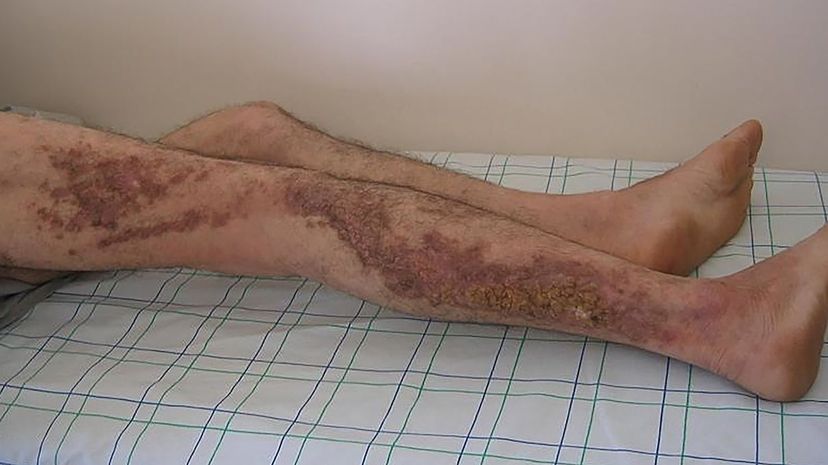
Darier's disease can vary in severity, but in the worst cases, painful red pustules can form that feel greasy to the touch and emit a distinct odor. The condition puts people who have it at risk of much worse bacterial or fungal infections.
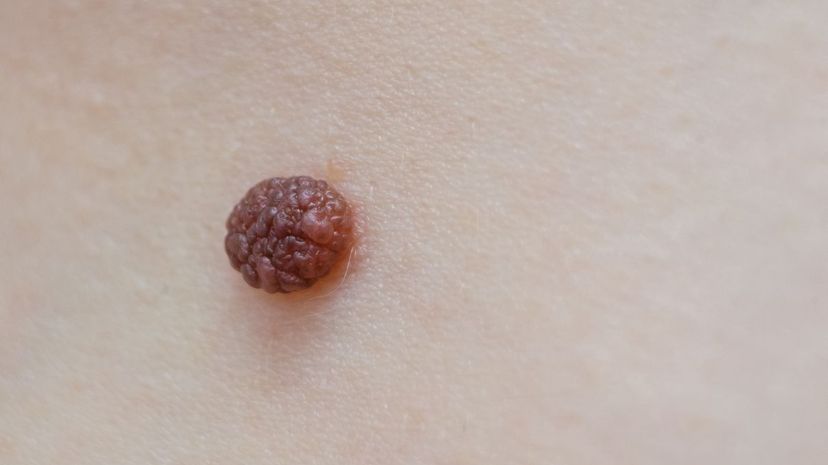
Moles - also called a nevus - are often benign and generally describe a number of different but similar conditions. For the most part, when someone is talking about a mole, they mean a small, dark or discolored bump on the skin. If you have any that grow bigger, you should let a dermatologist check them out.
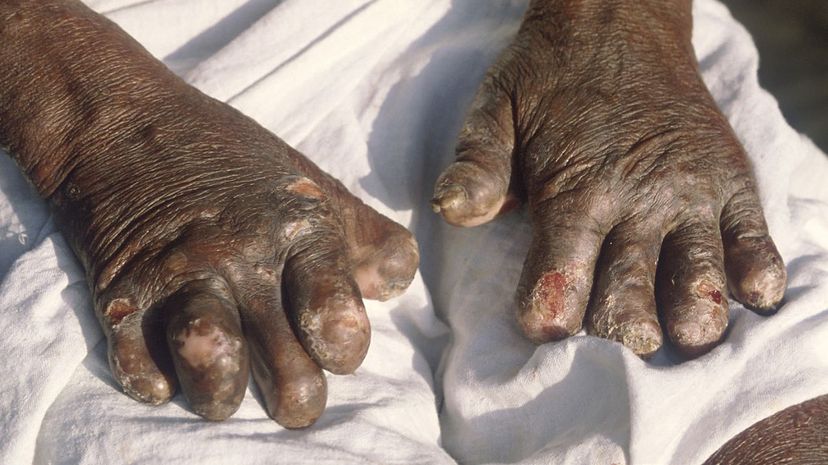
Leprosy is a bacterial disease that, if untreated, has horrific symptoms, including nerve damage which can lead to the loss of tissue and limbs. Symptoms may not present for as many as 20 years after infection.
Advertisement

Athlete's foot is caused by a fungal infection and leads to burning, itchy and cracked skin on your feet and toes. It gets the name because it's contagious and can easily spread around places like a damp locker room where many people are barefoot.
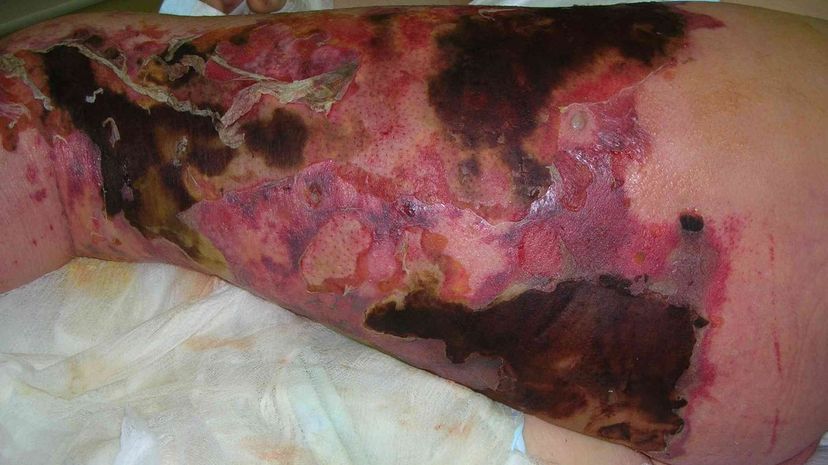
Necrotizing fasciitis typically occurs very quickly and is caused by an infection. Severe pain, fever, vomiting and skin that progresses from red to black are all symptoms. Antibiotics are needed to treat the condition, and the affected areas will often need to be surgically removed to save the surrounding tissue.
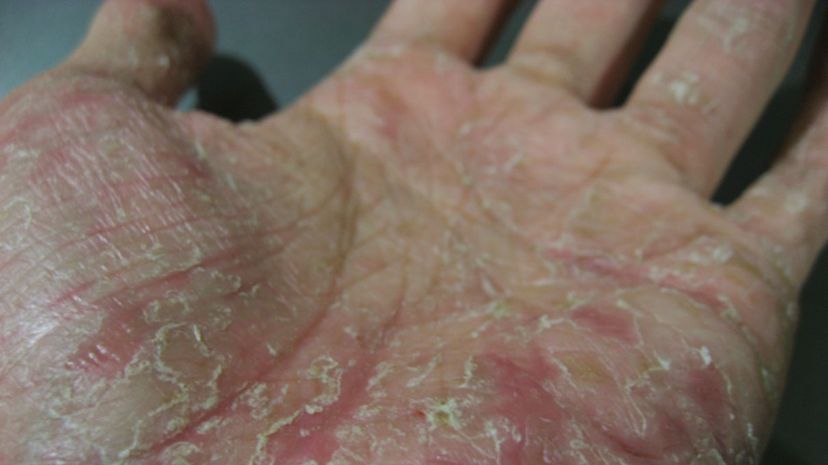
Peeling skin syndrome is exceedingly rare and unusual and manifests - as the name suggests - in the form of excessively peeling skin. Moisturizing creams that reduce inflammation and tenderness are the only treatment, but, so far, little else helps.
Advertisement
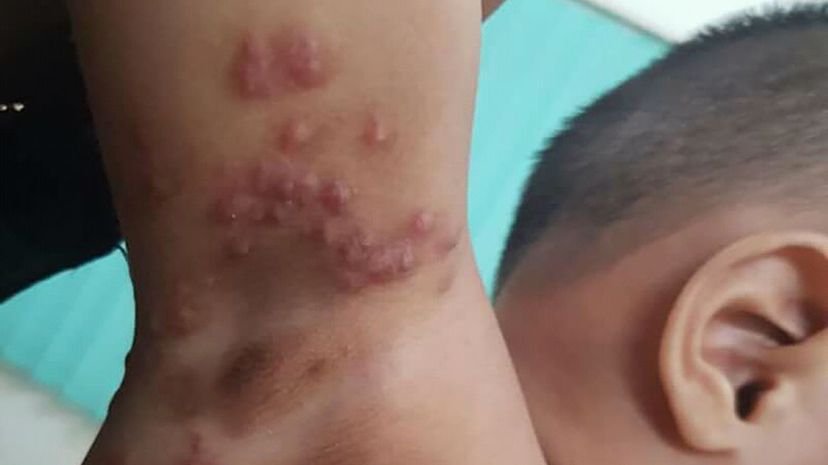
Scabies is caused by the scabies mite, and the skin condition - which usually manifests as a rash and itchiness - is a reaction to the mites burrowing and breeding in your skin. It's also infectious, so you can get it from other people or transfer it around your body.

There are varying degrees of ichthyosis, from the most common ichthyosis vulgaris to the rare and potentially deadly harlequin ichthyosis. Hydrating creams and lotions are often the main courses of treatment to deal with the condition.
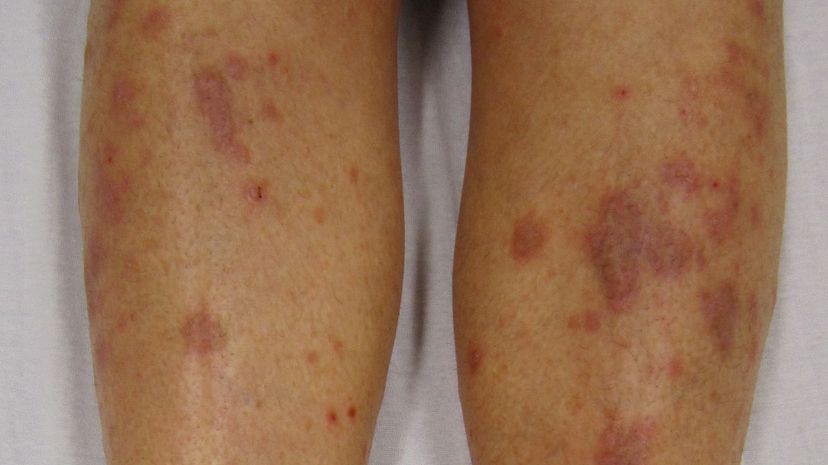
In English, lichen planus means "small, flat bumps," which is an accurate description of how this rash looks when it appears. The cause is not fully understood, though it may present with a number of other diseases, like hepatitis or chickenpox.
Advertisement
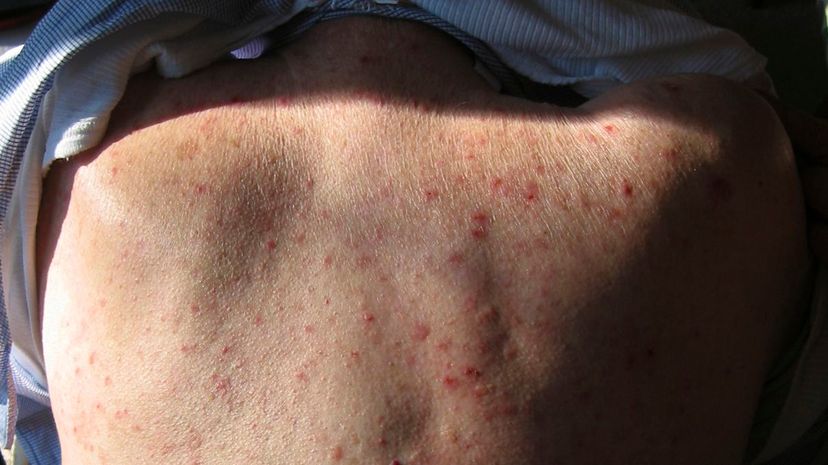
Pemphigoid is a fairly rare blister disorder that is symptomatic of an autoimmune condition. There is a similar condition that mostly affects areas like the mucous membranes and around the mouth, but pemphigoid tends to occur in drier areas of the body.
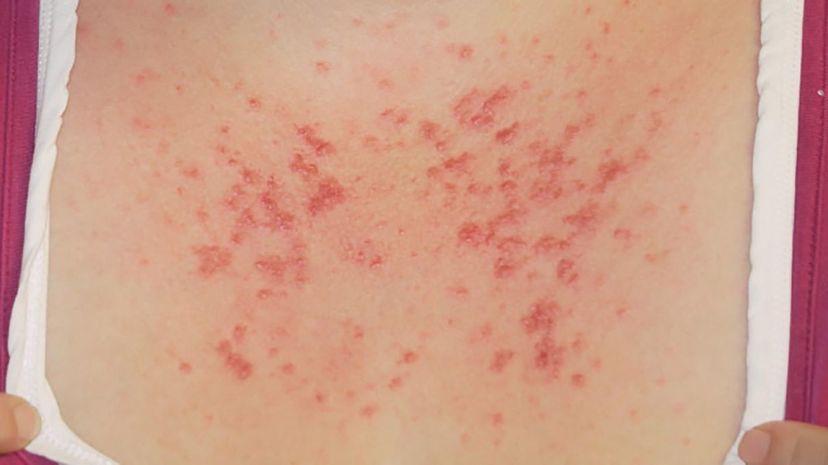
Polymorphic light eruption is a rash that occurs after exposure to sunlight or any source of UV light. It can happen in as little as a few hours or as many as several days after the exposure. It usually goes away without causing any permanent damage.
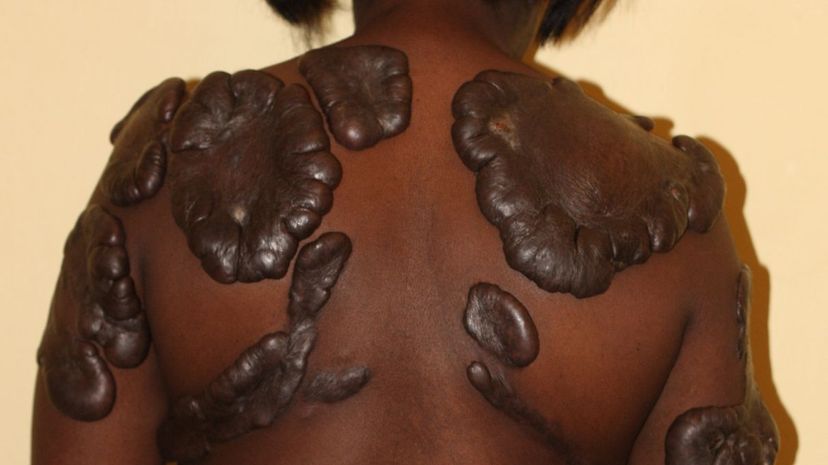
Keloids or keloid scars are what happens when the tissue from a normal scar seems to overgrow and get bigger than the actual wound it's replacing. They're usually pretty smooth and discolored.
Advertisement
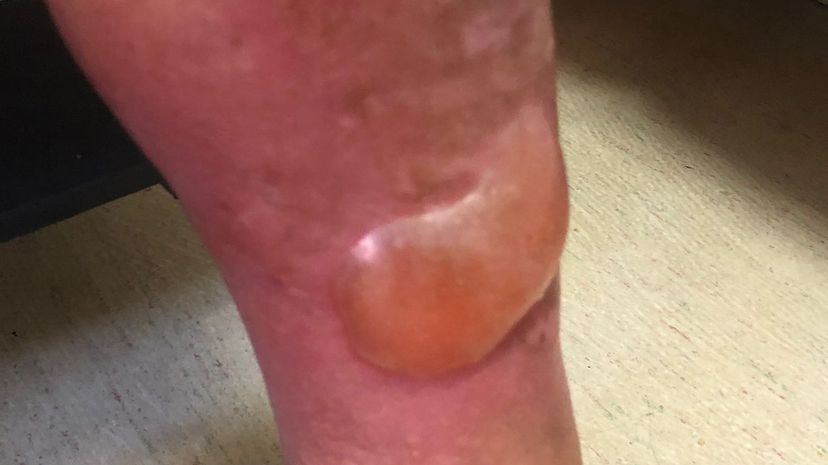
Blisters are pretty common as skin conditions go and can be brought on by friction, like when the heel of your shoe rubs against you, a burn, or several other kinds of trauma. You don't generally need medical attention, unless the blister somehow gets infected.